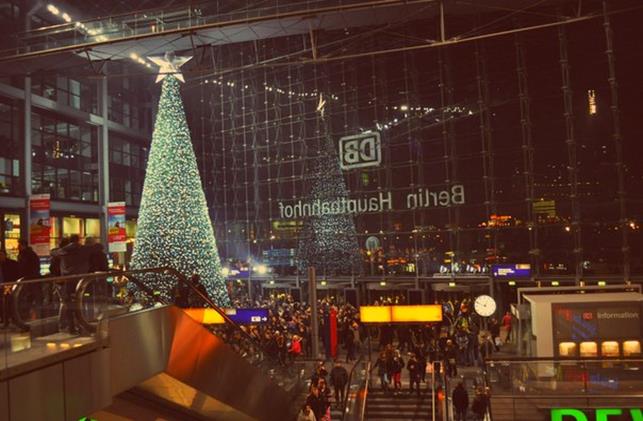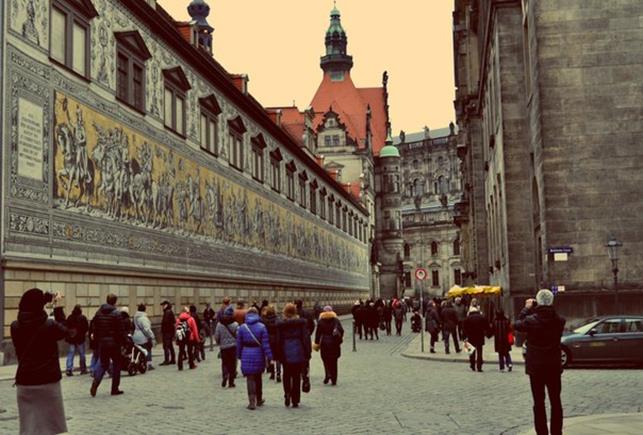Topic: Regional characteristics of the world. Foreign Europe
Lesson: Western Europe
Rice. 1. Map of the subregions of Europe. Western Europe is highlighted in blue. ()
Western Europe- cultural and geographical region, which includes 9 states located in the west of the region.
Compound:
1. Germany.
2. France.
3. Belgium.
4. The Netherlands.
5. Switzerland.
6. Austria.
7. Luxembourg.
8. Liechtenstein.
The executive power in the country belongs to the federal government, the president performs mainly representative functions. In fact, the federal chancellor is in charge of the administration.

Rice. 3. Federal Chancellor of Germany Angela Merkel on the background of the national flag. ()
Modern Germany is the main economy of Europe, the fifth economy of the world (GDP is about 3.1 trillion dollars). The country is an active player in the modern world, a member of the EU, NATO, the G7 and other organizations.
Thanks to its economic development, Germany attracts a huge number of migrants, it ranks first in foreign Europe in terms of the total number of immigrants.
The natural conditions of the country are varied. The surface rises mainly from north to south. According to the nature of the relief, 4 main elements are distinguished in it: the North German lowland, the Middle German mountains. Bavarian Plateau and the Alps. The relief of the country was affected by glaciation and marine transgressions.
The main resources of Germany: coal, rock salt, iron ore, soil resources.
In terms of industrial production, Germany is second only to the United States, China, India and Japan. The role of Germany in the international geographical division of labor is determined by its industry, which specializes in the production of high-quality products. In general, the share of manufacturing industries in the structure of industry is very high (over 90%), the share of extractive industries is declining, and the share of science-intensive industries is growing.
Largest TNCs in Germany:
7. Volkswagen, etc.
Germany provides more than half of its needs through imports (oil, gas, coal). The main role in the fuel base is played by oil and gas, and the share of coal is about 30%.
Power generation structure:
64% - at thermal power plants,
4% - at hydroelectric power plants,
32% - at nuclear power plants.
TPPs on coal operate in the Ruhr and Saar basins, in port cities, on natural gas - in the north of Germany, on fuel oil - in oil refining centers, other TPPs - on mixed fuel.
Ferrous metallurgy- one of the most important branches of specialization in Germany, but is currently in crisis. The main factories are concentrated in the Ruhr and the Lower Rhine; there are also in the Saar and in the eastern lands of Germany. Converting and rolling enterprises are located throughout the country.
Non-ferrous metallurgy- works mainly on imported and secondary raw materials. In terms of aluminum smelting, Germany in foreign Europe is second only to Norway. The main factories are in North Rhine-Westphalia, in Hamburg and Bavaria.
Mechanical engineering and metalworking- Germany's branch of specialization in the international geographical division of labor, it accounts for up to half of industrial production and exports. Major centers: Munich, Nuremberg. Mannheim, Berlin, Leipzig, Hamburg. Bavaria is the leader in the electrical industry. Automotive industry, marine shipbuilding, optical-mechanical, aerospace industries are highly developed.
Chemical industry It is represented primarily by products of fine organic synthesis, the production of medicines, etc. The chemical industry is especially developed in the western lands, in the east it was in a state of crisis.
Agriculture- uses about 50% of the territory; the industry's contribution to the country's GDP is 1%, more than 60% of all production comes from animal husbandry, where cattle breeding and pig breeding stand out. The main grain crops are wheat, rye, oats, barley. Germany is fully self-sufficient in grain. Potatoes and beets are also grown; along the valleys of the Rhine and its tributaries - viticulture, horticulture, tobacco growing.
Transport. In terms of the density of transport routes, Germany occupies one of the first places in the world; Railways form the backbone of the transport network. In the total freight turnover, the main role belongs to road transport (60%), then rail (20%), inland water (15%) and pipeline. Of great importance are external maritime transport and air transport, which play a major role in the country's external relations.

Rice. 4. Station in Berlin
Non-manufacturing sphere represented in Germany, as in a post-industrial country, by a wide range of different activities: education, healthcare, management, finance. Among the 50 largest banks in the world are eight German ones. Frankfurt am Main is a rapidly growing financial center in Germany. Germany is one of the leading countries in terms of tourist attendance.

Rice. 5. Tourists in Dresden
The most powerful state in terms of economy in Germany is Bavaria. Germany's main economic partners: EU countries, USA, Russia.
Homework
Topic 6, Item 3
1. What are the features of the geographical position of Western Europe?
2. What are the features of the geographical position of Germany?
Bibliography
Main
1. Geography. A basic level of. 10-11 cells: Textbook for educational institutions / A.P. Kuznetsov, E.V. Kim. - 3rd ed., stereotype. - M.: Bustard, 2012. - 367 p.
2. Economic and social geography of the world: Proc. for 10 cells. educational institutions / V.P. Maksakovskiy. - 13th ed. - M .: Education, JSC "Moscow textbooks", 2005. - 400 p.
3. Atlas with a set of contour maps for grade 10. Economic and social geography of the world. - Omsk: Federal State Unitary Enterprise "Omsk Cartographic Factory", 2012. - 76 p.
Additional
1. Economic and social geography of Russia: Textbook for universities / Ed. prof. A.T. Khrushchev. - M.: Bustard, 2001. - 672 p.: ill., cart.: tsv. incl.
Encyclopedias, dictionaries, reference books and statistical collections
1. Geography: a guide for high school students and university applicants. - 2nd ed., corrected. and dorab. - M.: AST-PRESS SCHOOL, 2008. - 656 p.
Literature for preparing for the GIA and the Unified State Examination
1. Thematic control in geography. Economic and social geography of the world. Grade 10 / E.M. Ambartsumova. - M.: Intellect-Centre, 2009. - 80 p.
2. The most complete edition of typical options for real USE assignments: 2010. Geography / Comp. Yu.A. Solovyov. - M.: Astrel, 2010. - 221 p.
3. The optimal bank of tasks for preparing students. Unified State Exam 2012. Geography: Textbook / Comp. EM. Ambartsumova, S.E. Dyukov. - M.: Intellect-Centre, 2012. - 256 p.
4. The most complete edition of typical options for real USE assignments: 2010. Geography / Comp. Yu.A. Solovyov. - M.: AST: Astrel, 2010. - 223 p.
5. Geography. Diagnostic work in the format of the Unified State Examination 2011. - M .: MTSNMO, 2011. - 72 p.
6. USE 2010. Geography. Collection of tasks / Yu.A. Solovyov. - M.: Eksmo, 2009. - 272 p.
7. Tests in geography: Grade 10: to the textbook by V.P. Maksakovskiy “Economic and social geography of the world. Grade 10 / E.V. Baranchikov. - 2nd ed., stereotype. - M.: Publishing house "Exam", 2009. - 94 p.
8. Study guide for geography. Tests and practical tasks in geography / I.A. Rodionov. - M.: Moscow Lyceum, 1996. - 48 p.
9. The most complete edition of typical options for real USE assignments: 2009. Geography / Comp. Yu.A. Solovyov. - M.: AST: Astrel, 2009. - 250 p.
10. Unified state exam 2009. Geography. Universal materials for the preparation of students / FIPI - M .: Intellect-Center, 2009. - 240 p.
11. Geography. Answers on questions. Oral exam, theory and practice / V.P. Bondarev. - M.: Publishing house "Exam", 2003. - 160 p.
12. USE 2010. Geography: thematic training tasks / O.V. Chicherina, Yu.A. Solovyov. - M.: Eksmo, 2009. - 144 p.
13. USE 2012. Geography: Standard exam options: 31 options / Ed. V.V. Barabanova. - M.: National Education, 2011. - 288 p.
14. USE 2011. Geography: Standard exam options: 31 options / Ed. V.V. Barabanova. - M.: National Education, 2010. - 280 p.
Materials on the Internet
1. Federal Institute of Pedagogical Measurements ().
2. Federal portal Russian Education ().
